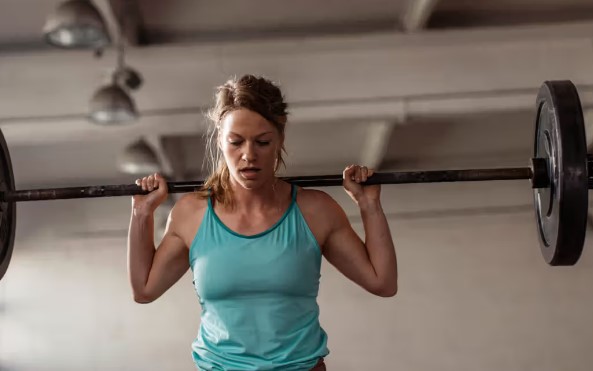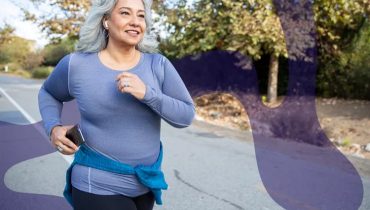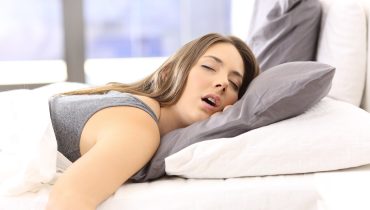According to a recent tiny study, high-intensity exercise seems to be rather helpful in reducing appetite. Among women especially, those results were significantly more notable.
Published online on October 24 in the Journal of the Endocrine Society, the study looks at the complicated link among exercise, the hormone ghrelin, and felt hunger.
Popularly referred to as “the hunger hormone,” ghrelin stimulates appetite and is In particular with regard to sex, researchers aimed to close gaps in the body of knowledge. Although exercise and appetite are well studied, the study writers point out that not much of it includes women.
Previous studies have also usually used only one type of ghrelin, known as acylated ghrelin (AG), but this most recent study presents a more whole picture by integrating a second form, deacylated ghrelin (DAG).
“The key take-home message from the study is that exercise, particularly at a higher intensity, suppresses total, acylated, and unacylated ghrelin,” Alice Thackray, PhD, a senior research associate in exercise metabolism at Loughborough University who wasn’t affiliated with the research, told Healthline. “This effect appears to be more pronounced in women than men.”
Although Thackray and the study authors admit there is still a lot to discover about how exercise affects appetite, the study helps to verify earlier results across genders and suggests a possible explanation.
How exercise affects the ‘hunger hormone’
Your body burns calories continuously even during rest. Your body’s energy needs rise too when you exercise, burning more calories that could cause you to feel hungry. Not always is the case, though.
Paradoxically, though it seems, exercise might also stifle appetite. Though the exact causes of this are unknown, studies have focused on how exercise affects circulating ghrelin.
Using 14 adults—eight of them male and six female—authors looked at this link in their study. The participants were younger individuals; the average age for men was forty-three years old and for women thirty-two years old. Although both groups had an average body mass index (BMI), roughly 22, participants were not overweight.

High-Intensity Exercise Works Like An Appetite Suppressant, Study Finds
Every subject underwent three randomised exercise visits. The subject would engage in none, moderate, or high intensity activity during their session.
For AG, DAG, total ghrelin, and lactate baseline and post-exercise measures were obtained. A metabolic consequence of exercise, lactate accumulates and acts as a physiologic indicator of muscle tiredness.
To get a composite score of felt hunger, participants also had to respond to questions on their appetite, fullness, and desire to eat.
While high-intensity exercise reduced DAG in both groups, women—whose baseline ghrelin was already higher than men—showered a significant decrease in AG.
The female group clearly drove the drop in acetylated ghrelin following high intensity, Kara Anderson, PhD, first author of the study and postdoctoral scholar at the University of Virginia School of Medicine, told Healthline.
Reduced ghrelin levels, however, did not exactly match a corresponding fall in subjective appetite for either group.
“Men and women have somewhat equal hunger ratings in response to exercise. Although much more study has to be done, this does imply that men and women may react to exercise differently, particularly in relation to their ghrelin levels.
Why exercise intensity matters
Exercise intensity affected how much exercise influences ghrelin levels and hunger. For both men and women, high-intensity exercise had the most marked impact on ghrelin. Still, perceived hunger revealed another picture.
Both high-intensity and moderate-intensity exercise produced almost exactly the same hunger scores for women, both of which exceeded the control—no exercise. High-intensity exercise reduced reported hunger in men relative to the control; moderate exercise raised hunger in men.
However, lactate—which the researchers hypothesise may be involved in “exercise-induced ghrelin suppression”—may be the most crucial factor of high-intensity exercise.
Your body generates lactate basically as a side effect of activity. Your body has beyond what is sometimes called as the lactate threshold when it generates lactate quicker than it can be used aerobically.
You have to be performing high-intensity activity if you are crossing the lactate threshold. And it could be lactate from surpassing that barrier that is essential to reduce appetite.
Thackray added, “The exercise-induced changes in ghrelin were observed alongside increases in lactate which has been proposed previously as a potential mechanism for ghrelin suppression with exercise.”
“We need more research to support the mechanisms involved in exercise-related appetite responses, including how exercise influences appetite control within the brain,” she said.












